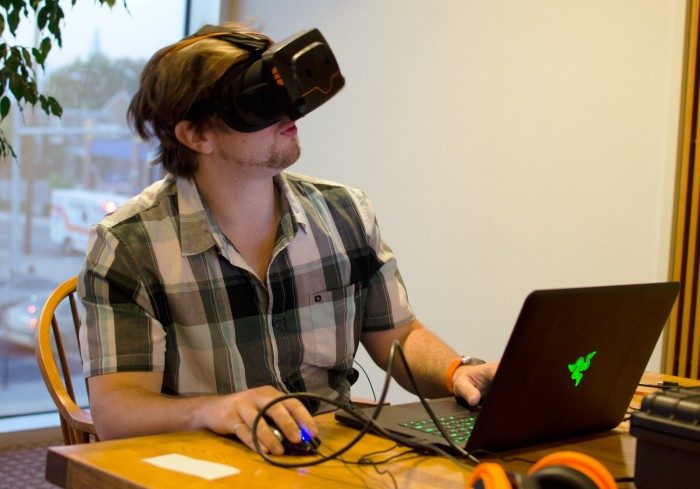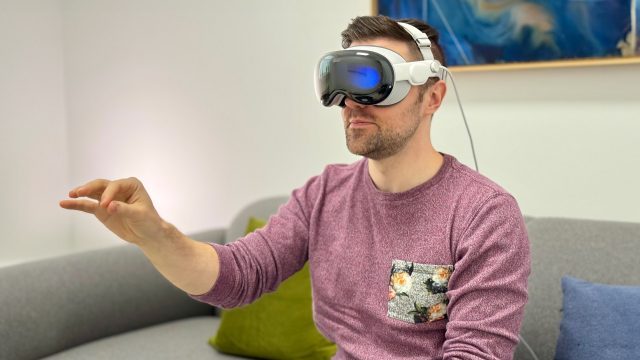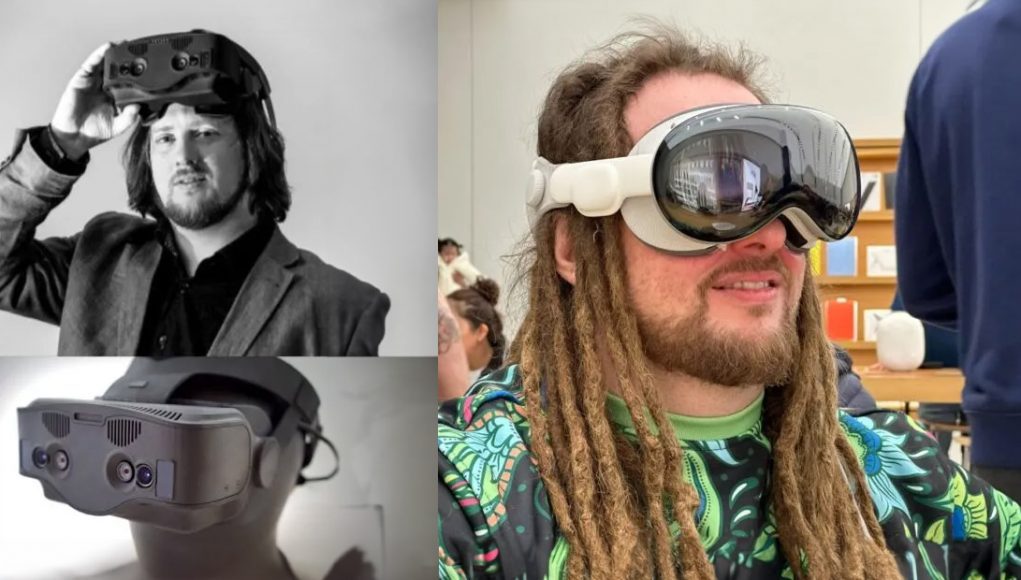The Voices of VR Podcast never misses an opportunity to document the ongoing history of the XR space. With Vision Pro now in the hands of many, host Kent Bye recently interviewed two XR insiders that have been part of the industry for more than a decade each.
The launch of Apple Vision Pro is in some ways the most significant event for the XR industry since the acquisition of Oculus by Meta back in 2014. With Apple bringing new ideas to the table, the headset has prompted reflections on the XR industry up to this point and where things are headed.
Kent Bye, the creator of the Voices of VR Podcast, has consistently documented the real-time history of the XR landscape with more than 1,300 episodes to date. And of course he wasn’t going to miss the moment to capture insights and reflections on what the headset means.
Former Apple Employee on Building Vision Pro
Episode #1,348 features an interview with Bert Nepveu, an early XR pioneer which eventually joined Apple and worked on the Vision Pro headset.
Nepveu spoke to his start as the founder of VRvana, an early startup focused on building a mixed reality headset. One of the unique elements the company developed was a physical control on the headset which created a seamless transition between a fully immersive VR view and a passthrough AR view—this was at a time when most headsets were either strictly AR or strictly VR, but not both. Apple reportedly acquired the company back in 2017 and, as we know today, the ‘reality dial’ feature become an integral part of Vision Pro.

Although Nepveu left Apple before Vision Pro ultimately launched, he spoke about his experience working on the headset. Given Apple’s notorious secrecy, he couldn’t go too deep but did share a few interesting nuggets.
Starting with the culture at Apple, Nepveu found it “very military,” saying that all managers have to go to an internal ‘manager university’ to learn how to do things ‘the Apple way’.
He joked that there are “three gods” inside of Apple which must be appeased to successfully build a product that makes it to market:
- The god of Human Interface – how the product works and its intuitiveness
- The god of Industrial Design – how the product looks and feels
- The god of Legal – Enforcing secrecy, even internally
At Apple Nepveu said he focused primarily on “point-of-view correction,” referring to the processing necessary to make the headset’s passthrough view look correct and feel comfortable. But, he shared, it was difficult to obtain resources for his work because the internal secrecy practices meant he could hardly tell colleagues what he was building when attempting to recruit them.
Nepveu also talked about the design decisions that led to Vision Pro’s look and ergonomics. Apple apparently aimed for a ‘ski goggle’ look because they felt it was more socially acceptable than something that looked more futuristic.
At one point during the development of Vison Pro, the headset had a rear-mounted battery which would have created better balance and a potentially more comfortable headstrap overall. But someone nixed the idea, perhaps because it just looked too bulky, Nepveu said. The company also didn’t want to back off of cornerstone materials like aluminum and glass.
At the time Nepveu left Apple, the headset was “supposed to ship in 2019.” When 2019, 2021, and 2022 came and went with no announcement, he wasn’t sure Vision Pro would ever ship.
Alas, Vision Pro was announced in 2023 and shipped earlier this year. When he finally tried the finished product for himself, Nepveu said he wept as he reflected on his journey from struggling startup founder to seeing his work in the shipping headset.
Having worked at the company for several years, Nepveu said Apple was unique in the way that it’s structured. While this make some things difficult internally, he maintains that no other company could ship a product quite like Vision Pro.
To that end, he suspects that Samsung and Google—which are collaborating on an upcoming XR headset—”must be in panic mode” after seeing what Apple produced. While they can build great hardware, said said, “it not gonna be easy” for the companies to build an intuitive, end-to-end product, considering their organizational structures.
Literally Inside Vision Pro

Episode #1,346 features an interview with Ben Lang (that’d be me!) the founder of Road to VR; I’ve been reporting on the industry’s key developments for more than 13 years.
To facilitate our conversation about the significance of the headset, host Kent Bye and I decided to perform the interview while both using FaceTime on Vision Pro . This was my very first time using FaceTime on the headset and seeing Apple’s Persona avatars (outside of controlled demos anyway), which made for a fun meta-moment as we used the headset throughout our conversation.
Kent and I mused about Vision Pro’s capabilities and how important usability is to XR headsets. We also talked about the ways Apple is smartly leveraging its ecosystem, especially by allowing more than one million iPad apps to seamlessly run on the headset without modification.
While Vision Pro does a lot right, we also talked about how Apple unfortunately didn’t find much room for innovation in ergonomics. While it’s not the heaviest headset on the market, the default strap puts a lot of pressure on the face. A secondary strap, which is also included in the box, helps relieve some pressure with an overhead strap, but the headset remains significantly front-heavy in the face of more balanced designs like Quest Pro.
There’s plenty more covered in our conversation, representing early reactions to the headset, how it compares to the status quo, and what it will mean for the industry going forward.
If you enjoyed either of these interviews, consider supporting the Voices of VR Podcast on Patreon.







